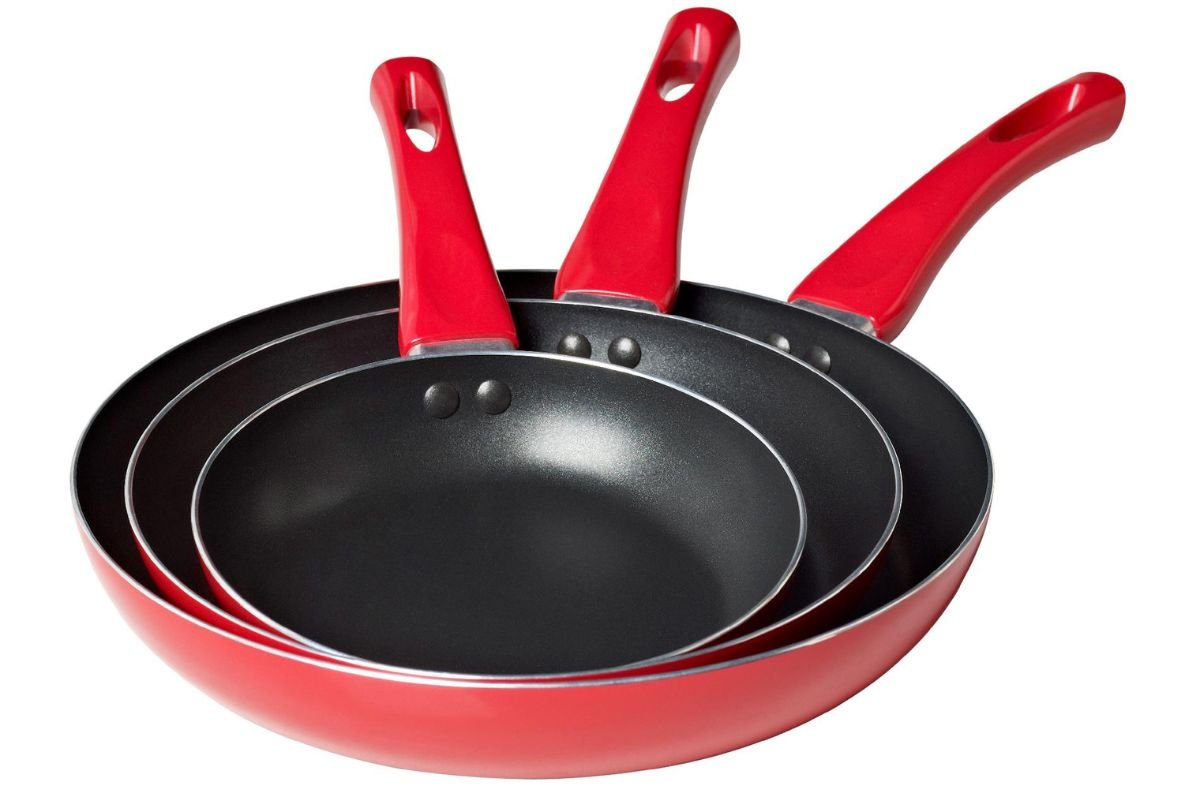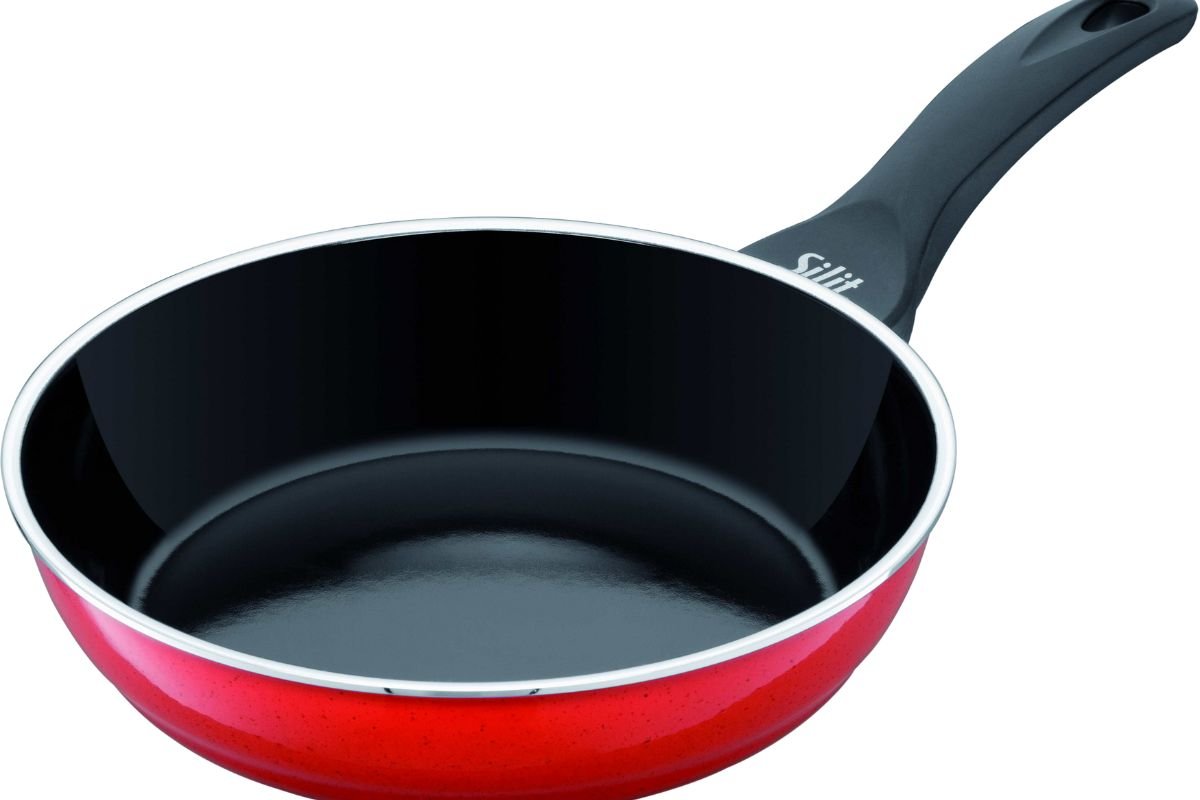The beauty of a nonstick frying pan is in the name—food doesn’t stick! How is that possible?

A chemical coating applied to metal pans creates a slick surface that allows food to slide right off.PTFE belongs to a family of chemicals known as PFAS, or per- and poly-fluoroalkyl substances. They are sometimes called “permanent chemicals” because they can persist in our bodies for months or years and break down very slowly or perhaps not at all in the environment. Some of these chemicals have been linked to human health problems and environmental damage. Consumer Reports recently tested three recommended nonstick frying pans in our ratings to see if their claims of being free of chemicals in the PFAS family were accurate and investigated the issues of PFAS in pans. Experts we consulted for that report noted that using a PTFE-coated pan in good condition is unlikely to expose you to high levels of harmful PFAS. However, people who want to limit their exposure may prefer to steer clear of pans with this coating. Whichever coating your pan has, the surface begins to deteriorate over time, especially if you don’t treat it with care. That means being mindful of the utensils you use, the oil you cook with (if any), and, of course, how you clean the pan. “If the pan’s coating starts to look like it’s peeling or very scratched, get rid of it,” says Gillian Z. Miller, PhD, a senior scientist at the Ecology Center, an environment-focused nonprofit group in Michigan.Regardless of the coating on your pan, the surface will deteriorate over time, especially if you don’t treat it with care. This means being aware of the utensils you use, the oil you cook with (if any), and of course how you clean the pan. “If the pan’s coating starts to look peeling or too scratchy, get rid of it,” says Jillian Z. Miller, Ph.D., senior scientist at the Ecology Center, an environmental-focused nonprofit group in Michigan.Here’s what you can do to make your nonstick pans last longer.
How to Care for Nonstick Pans So what extra care does your nonstick need?
We’ve interviewed manufacturers and consulted our experts from the lab to find out what you should do to ensure your pan is safe to use and produces flawless fried eggs for years to come.
Avoid metal containers
Metal can scrape or otherwise stain the nonstick surface, causing food to stick and making the pan difficult to clean. Also, you don’t want to get coating flakes in your food. Once the finish on your pan has worn off, you need to discard it. To avoid this, stock up on silicone, plastic and wooden containers to use instead – they won’t damage your pan.
Do not stack them
Do not stack or nest your nonstick pans. The bottom of one pan can scratch the cooking surface of another. Calphalon, among other brands, warns owners of its cookware that storing nesting pans or lids in them may void the warranty. If you’re short on space and must stack, place a potholder, a dish towel, or some other soft layer between the pans to protect the cooking surface.
Avoid cooking spray
Cooking sprays burn at a lower temperature than butter or oil and can cause a sticky build-up on your pan that is difficult to remove. In fact, Anolon states in its owner’s manual that using cooking spray on the nonstick coating will void the pan’s warranty. If you want to drizzle a little oil on the pan before cooking, fill a mister with your favorite vegetable oil or olive oil.
Do not heat nonstick pan when empty
According to T-Fal, a leading manufacturer of nonstick skillets, heating an empty nonstick pan in, say, a cast-iron pan that can withstand high heat for steak can damage the coating and shorten its life. Also, overheated coatings with PTFE can produce fumes that are potentially toxic to pet birds and harmful to humans.
Do not submerge a hot pan in water
The rule of never submerging a hot pan is especially true for nonstick pans, which are lighter in weight and more prone to wobble. Once a pan is scratched, you will cook, because the pan will not make proper contact with the burner and heat evenly. As Calphalon warns in its owners manuals: Allow pans to cool completely before washing.
Do not put nonstick pans in the dishwasher
(Even if it’s labeled as dishwasher-safe.) We can tell you that not all dishwashers and dishwasher detergents are created equal. High heat and harsh detergents can damage both the nonstick surface and the exterior of the pan. “Every dishwasher and detergent is different,” says Erin Fuchsen, a spokeswoman for T-Fal, whose nonstick pans are labeled dishwasher-safe. “If the dishwasher uses too much heat or the detergents are harsh, it can dry out the nonstick surface.
“Be careful how you clean your pan
Nonstick pans clean so easily that we no longer test them for ease of cleaning in the lab. Avoid abrasive pads or sponges, which can scratch the surface of the pan. All you need is a simple sponge, soap and water. But don’t go too easy on the cleanup, says RJ Manoni, director of e-commerce at Swiss Diamond. If you notice oil forming on your pan, the company recommends spreading a paste of baking soda and water, letting it sit for up to 24 hours, and then rinsing. Most of the time it restores nonstick properties. Also, don’t use paper towels to clean nonstick pans. This can leave food debris that can smoke the pan and burn the next time you use it, Manoni says.
Also Read: The Unrivaled World of Induction Pots and Pans
Stellar Nonstick Frying Pan from CR’s Test
If your frying pan is too scratched and damaged to use, it’s time to replace it. Here are the top five picks from Consumer Reports’ tests, listed alphabetically.
Follow these nonstick rules to make your pan last for years to come
